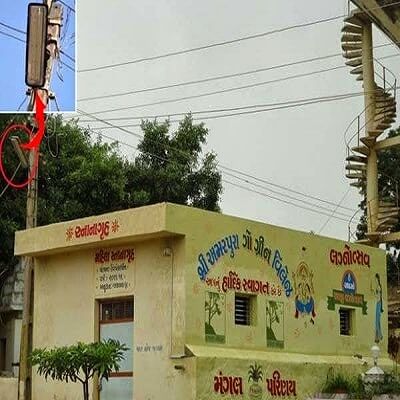
First LED Village Project of Gujarat, 2015
Village: Amrapura, Taluka Mansa District, Gandhinagar
Objective: To convert entire electrified village to LED lighting
Implementing Agency: Gujarat Energy Development Agency
The Indian government is keen to bring LED light to every urban and rural household in the country. This initiative has been supported by government ministries, lighting associations, state energy development agencies, lighting companies and NGOs alike.
The urban and rural landscape throws up different challenges depending on a number of factors, the biggest one being the availability of electricity.
In developing countries such as India, the rural landscape consists of a majority of villages lying outside of the electricity grid. Even for the few that do have access to some form of conventional lighting, the point of sourcing the electricity is questionable with many adhering to illegal power connections.
Challenges in Off-Grid Areas
Life without electricity creates difficulties in many aspects of daily living. Women are forced to finish their household chores while there is still light outside. This also prevents them from working elsewhere during the day and earning an income. School children are unable to study once night falls. Families find it difficult to use outside toilets after dark. Farmers are also at the risk of having their crops ruined because of wild animals. The rainy season brings with it its own set of problems such as poisonous snakes creeping into the house.
Sincere efforts are being made towards resolving economical and educational issues in off-grid areas though LED lighting products by lighting companies working in partnership with international charitable organizations or state energy departments working along with lighting government bureaus like BEE.
For example, in 2014 Panasonic launched a new LED solar light for villages in rural India. Through product testing and assistance from members of the 100 Thousand
Solar Lanterns Project, Panasonic’s team developed a reliable product that fulfilled the rural user’s requirements for a water-proof lamp that came with a cell phone charger function and the capacity to be lit throughout the night. The lamp’s simple but effective design allowed it to be hung from a ceiling or a wall, or simply propped up.
Amrapura village in Gujarat has a population of approximately 1550 residents consisting mainly of landlords, farmers, and potters. Besides the 285 households, the village also houses 9 community places.
In January 2015, Amrapura became the first village to be electrified by LED lights for both indoor and outdoor applications under a project undertaken by Gujarat Energy Development Agency which jointly funded by Bureau of Energy Efficiency.
Scope of the Project and Execution
The project ambit included the replacement of conventional lighting devices in all the households and all street lights with LED lamps of adequate ratings.
1000 of 60/100 watt bulbs were replaced with 9W LED bulbs.
350 of 40W FTLs were replaced with 14W LED tubelights
55 streetlights were replaced with 18W LED lights.
LED street lights are beneficial in terms of safety, emissions savings and money savings.
In another similar state government scheme which will be rolled out soon, Philips Lighting in partnership with Uttar Pradesh New and Renewable Energy Development Agency has taken the initiative to install 76,000 solar LED street lights more than 800 villages across 40 districts of the Indian state Uttar Pradesh.
Conclusion
With the hopeful conclusion of the Paris talks, energy-saving goals can be met if local governments, utilities and financial institutions work as a unit to transform both urban and rural spaces. It is heartening to see that many of them are already dedicatedly working towards bringing a better light aka LED lighting to rural villages all over the country and creating a brighter future for village inhabitants.